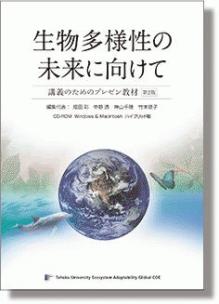31/07/2013
Tohoku Restoration and Biodiversity - The Tohoku Green Renaissance Project
The Tohoku maritime area devastated by the Great East Japan Earthquake was a region where people were fascinated by the beauty of the landscapes and the blessings of rich ecosystems consisting of relationships among humans, the sea, rice paddies and forests. The damage from tsunami was enormous and the restoration of the Tohoku region has just started. We have to place more emphasis on disaster diminishment, but also, we have to recognize that the Tohoku restoration will not be achieved without recovering the agriculture, forestry and fisheries of this region.
Of course, it is important to discuss the heights of coastal levees and sites for temporary houses. However, if we can make a restoration plan of living in harmony with nature based on the potentiality of living things and ecosystems and the wisdoms of ancestors, future generations will be able to gain more profits both economically and temporally. Since soon after the Earthquake, Global COE of Tohoku University has advocated a Green Renaissance adapting to ecosystems in cooperation with NPOs in Tohoku and firms in the Tokyo metropolitan district, and served as the Secretariat of the Tohoku Green Renaissance Project.
Now, mainly the following three projects have been conducted: (1) Ecosystem monitoring in the devastated areas, (2) restoration of rice paddies damaged by seawater, and (3) an island development project for the Urato Islands. In addition, other projects such as an investigative and research project on coastal forests, and a conservation project on coastal plant ecosystems are promoted by respective parties, on independent budgets. The results are provided and information is exchanged every 2-3 months. Tohoku University provides a place for discussion and plays the role of practitioner/advisor from educational and research perspectives in order to conduct original projects and advise on projects conducted by other bodies.
Tohoku Regional Environment Office, Ministry of the Environment, also has joined this project in order to develop sustainable towns, optimizing the natural resilience of the devastated areas through industry-government-academia-private cooperation. The results are transmitted to international society. Anybody interested in biodiversity or restoration in harmony with nature can join this project. For details, please see: http://5actions.jp/en/conserve/tohoku-greenfukkou/ and
http://www.ipsnews.net/2012/05/renaissance-rice-rises-from-the-debris/ .
Global COE Program:
Global COE Program is a worldwide research base and a 5-year project of the Ministry of Education, Culture, Sports, Science and Technology, Japan. This foundation was completed in March 2013. Now, the Ecosystem Adaptability Center of Tohoku University is managing this project.
For Professors, Teachers or Team Leaders,
The Ecosystem Adaptability Center of Tohoku University has published a 500 page PowerPoint material book necessary for biodiversity lectures. The information is provided using figures, graphs, photos and illustrations. We would be most grateful if the materials could be used for realizing the present situations of biodiversity issues and supporting correct comprehension toward the solutions. The materials are downloadable from: http://gema.biology.tohoku.ac.jp/textbook2/ (Available only in Japanese)
Toward the Future of Biodiversity
Presentation Materials for Biodiversity Lectures, The 2nd Edition
Produced by Ecosystem Adaptability Global COE of Tohoku University
Published in March 2013 by Tohoku University Center for Ecosystem Management
(Noriko Takemoto, Visiting Professor, Graduate School of Life Sciences, Tohoku University)











